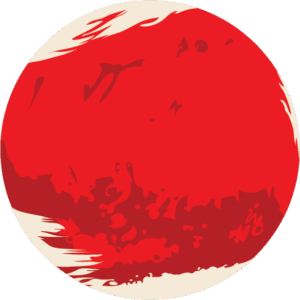The Downlink • Oct 28, 2022
Creepy Cosmos! Scary space! Petrifying planets!
Space Snapshot

The beauty of space speaks to many of us on a deep level. The Witch Head Nebula, on the other hand, cackles at us and says, “I’ll get you, my pretty!” In reality, this is just a cloud of interstellar dust that reflects light from nearby stars. But to the human eye, it’s easily identifiable as a wicked witch plotting to throw us all into a big cosmic cauldron. Happy Halloween! Image credit: NASA.
You love space, now take action
This weekly newsletter is your toolkit to learn more about space, share information with your friends and family, and take direct action to support exploration. Anyone can subscribe at planetary.org/connect to receive it as a weekly email.
Mission Briefings


Behold the bizarre two-tailed asteroid! The Hubble Space Telescope discovered that asteroid Dimorphos has developed a second, unexpected debris tail (the upper tail in this image) in the aftermath of the DART spacecraft’s impact. In the coming months, scientists will be taking a closer look at the data from Hubble to determine how the second tail developed. Image credit: NASA, ESA, STScI, Jian-Yang Li (PSI); Image Processing: Joseph DePasquale.

Beware the killer solar flares! Private space company Blue Sky Space has announced it will launch a mission in 2024 to study how solar flares can negatively affect the habitability of exoplanets in the flaring star’s orbit. The U.K.-based company collaborated with research institutions throughout Europe to design the mission, and researchers will be able to buy observing time on the spacecraft once it’s operational.

Shield your eyes from the hellishly hot exoplanet! A new study using data from NASA’s Spitzer Space Telescope has found that GJ 1252 b, a rocky exoplanet slightly larger than Earth, is so hot that gold, silver, and copper would all melt on its surface. With such extreme temperatures, GJ 1252 b likely has no atmosphere at all. This study marks the first time scientists have been able to deduce the details of such a small exoplanet’s atmosphere.
From The Planetary Society


Like a mummy, the desiccated Mars we see today holds secrets of an ancient past. Millions of years ago it was a warm, watery world capable of supporting life. Although a mummy coming back to life is the stuff of horror, there’s hope that Mars might have some capacity for life in the water that remains hidden beneath its surface and in its ice. Pictured: An artist’s impression of Mars now and in its watery past. Image credit: NASA Goddard.

There’s not much scarier than the possibility of an asteroid impacting the Earth. Planetary Society Chief Advocate Casey Dreier made this clear in a recent article in The Washington Post, in which he drew comparisons to another scary disaster we’re all very familiar with: a global pandemic. The specter of an impact is frightening, but there’s something we can do about it: funding planetary defense missions like NEO Surveyor.

Change can be scary, but we’re sure you’ll love this one. The Planetary Society is thrilled to announce Sarah Al-Ahmed as the new host of our weekly podcast and radio show, Planetary Radio. Sarah will join longtime host Mat Kaplan as co-host in November, and will take over the mic in early January. You can hear an interview with Sarah in this week’s episode.
What's Up

The night may be dark and full of terrors, but it’s worth getting out there to see some planets. Jupiter is shining very bright in the east at sunset, with Saturn looking yellowish up above it. If the goblins and ghouls don’t get you, stay out a little later to see reddish Mars rising in the east. Learn more at planetary.org/night-sky.
Wow of the Week

Who’s dressing up as a Mars mummy this year? If you celebrate Halloween and choose a space-themed costume, we’d love to see it! Snap a pic of your cosmic costume and tag us on Twitter (@exploreplanets) or Instagram (@planetarysociety) or email us at [email protected]. Happy Halloween!
Send us your artwork!
We love to feature space artwork in the Downlink. If you create any kind of space-related art, we invite you to send it to us by replying to any Downlink email or writing to [email protected]. Please let us know in your email if you’re a Planetary Society member!


 Explore Worlds
Explore Worlds Find Life
Find Life Defend Earth
Defend Earth


